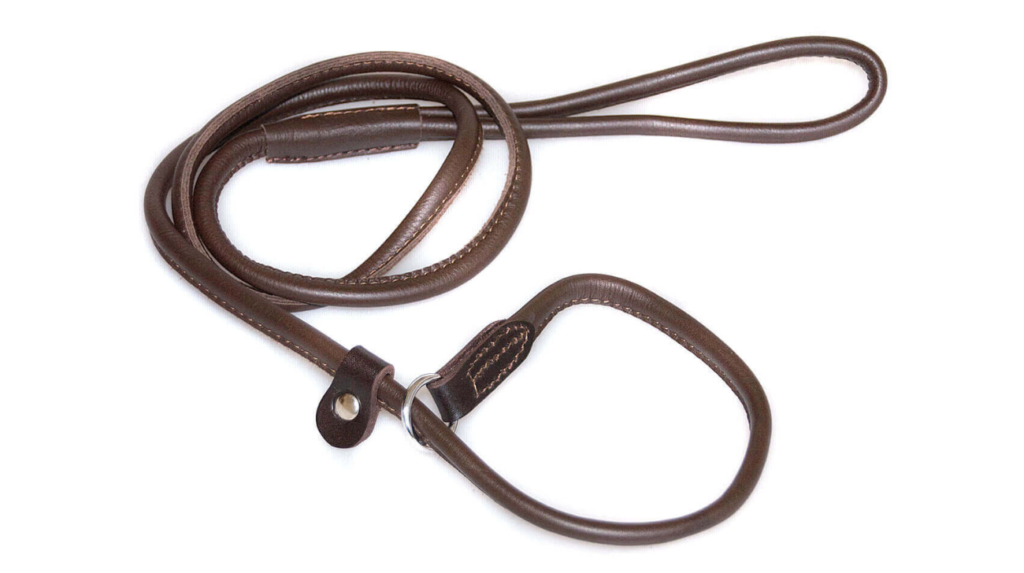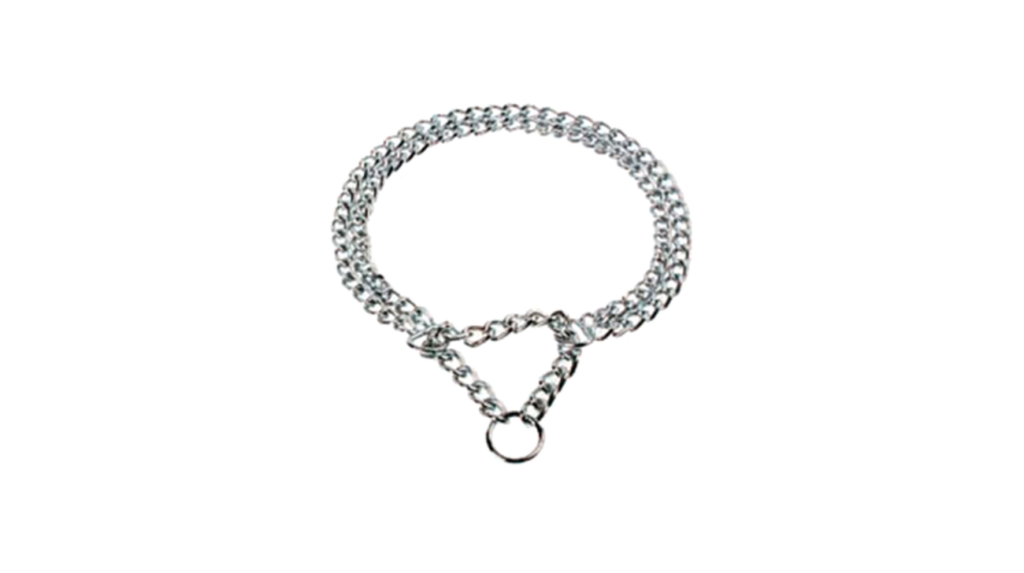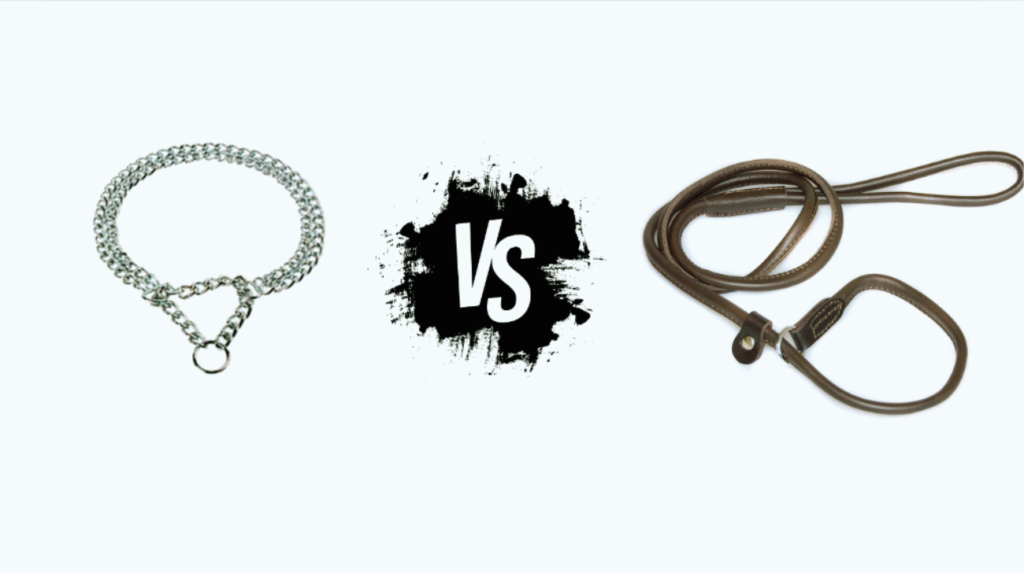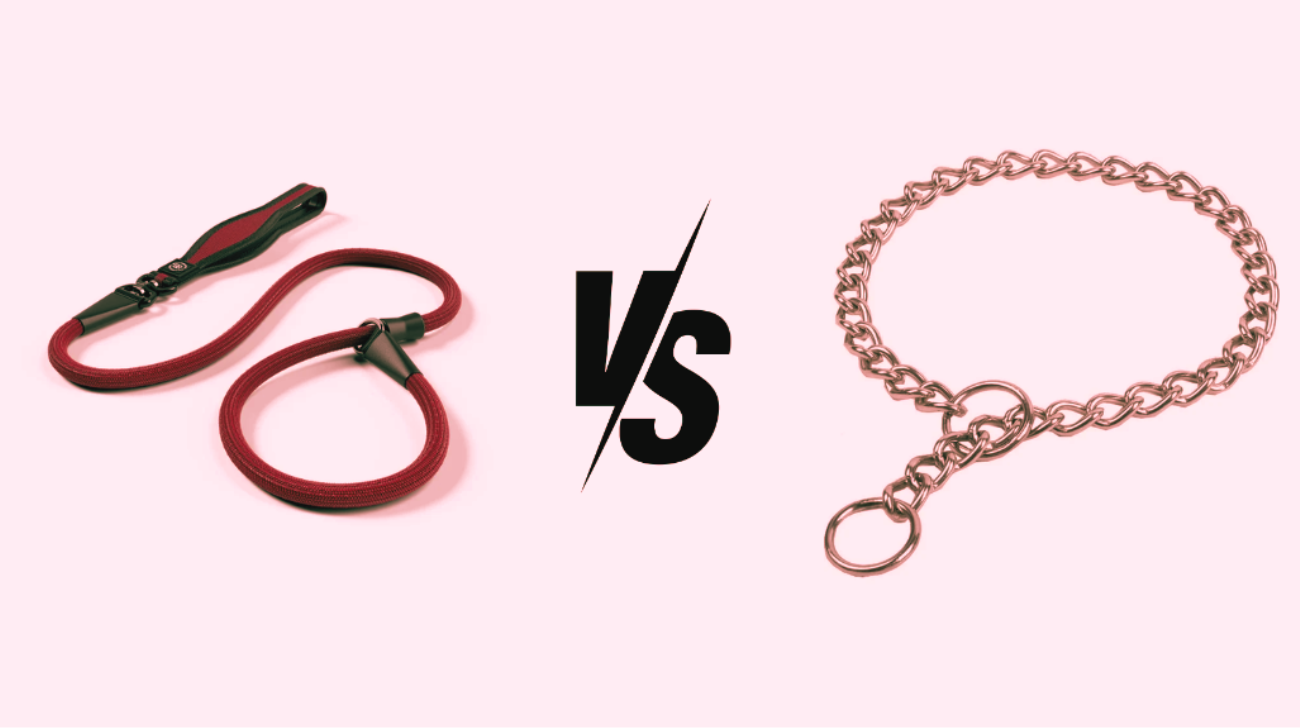When it comes to dog training, especially when it involves walking and leash control, the choice of collar can have a significant impact on your dog’s behavior and comfort. Two commonly used training tools are the slip lead vs choke chain.
Both collars are designed to help with walking and controlling your dog, but they differ greatly in design, function, and effectiveness. Understanding these differences can help you choose the best tool for your dog’s specific needs. Discover the ideal fit by learning what size collar for Newfoundland dog to ensure your pet’s comfort and safety.
In this guide, I’ll explore both the slip lead and choke chain in detail, outlining their features, benefits, drawbacks, and ideal use cases. By examining both tools, you’ll be able to make an informed decision about which is best for your dog’s training and comfort.
| My Personal Opinion: For most dogs, the slip lead provides a gentle yet effective solution for training, especially for dogs still learning proper leash manners. However, for dogs that pull excessively or have more challenging behavior, the choke chain can provide more immediate control, though it requires careful handling to avoid injury. Both collars can be effective when used appropriately but must be chosen with your dog’s temperament and behavior in mind. |
Blog Highlights
ToggleWhat is a Slip Lead?
A slip lead is a combination of a collar and leash, designed to slip over the dog’s head and tighten when the dog pulls on the leash. This tightening provides a gentle correction without causing harm.

Made of durable materials like nylon or leather, the slip lead is popular for its simplicity and ease of use. It is particularly effective for dogs that are still learning basic leash manners and is commonly used by trainers and veterinarians.
Types of Slip Leads:
- Standard Slip Lead: A basic design, often made from nylon or leather, perfect for general leash training.
- Reflective Slip Lead: Ideal for walking at night, as it features reflective stitching for visibility.
- Braided Slip Lead: Durable and strong, suitable for larger or more active dogs.
Benefits of the Slip Lead:
- Simplicity: Easy to use and requires no complicated adjustments.
- Humane Training Tool: Provides gentle pressure, encouraging dogs to stop pulling without harm.
- Adjustable Fit: The collar can be adjusted for comfort and is suitable for dogs of various sizes.
Limitations of the Slip Lead:
- Less Effective for Strong Pullers: May not provide enough control for dogs with a history of excessive pulling.
- Risk of Over-tightening: If not properly fitted, the slip lead can become too tight, causing discomfort or injury.
- Gradual Correction: The pressure is less immediate, which may not be enough for dogs with persistent pulling issues.
For expert tips on how to fit a collar on a Belgian Shepherd, this guide offers simple steps to ensure your dog’s collar fits securely and comfortably.
What is a Choke Chain?
A choke chain, or choke collar, consists of a metal chain loop that tightens around the dog’s neck when pulled. It is designed to deliver a more immediate correction by restricting airflow briefly. While it can be effective for controlling strong pullers, it is often controversial due to the potential for injury if misused.

Types of Choke Chains:
- Standard Choke Chain: A basic metal chain that tightens when tension is applied.
- Training Choke Chain: Made with smoother links to reduce friction and make it less harsh on the dog’s skin.
- Prong-Style Choke Chain: Similar to a prong collar, this version includes links that pinch the dog’s neck when it pulls.
Benefits of the Choke Chain:
- Immediate Control: Delivers a quick, strong correction that can be effective for strong pullers.
- Clear Feedback: Provides a sharp correction that some dogs respond to more immediately.
- Durability: The metal construction makes it long-lasting, ideal for larger or stronger dogs.
Limitations of the Choke Chain:
- Risk of Injury: If not fitted or used correctly, a choke chain can cause choking, injury, or damage to the dog’s neck or airway.
- Harshness: The quick tightening can cause stress or fear in some dogs, leading to negative associations with the training process.
- Not for All Dogs: Choke chains are not recommended for puppies, small dogs, or dogs with neck or breathing issues.
For detailed guidance on selecting the correct collar size for a Belgian Shepherd, this article provides essential tips to ensure your dog’s comfort and safety.
Key Differences Between Slip Lead vs Choke Chain
Detailed Differences Between Slip Lead vs Choke Chain

Design and Structure
Slip Lead: The slip lead is a single loop of material (usually nylon or leather) that tightens around the dog’s neck as tension is applied. It offers a gradual correction, which makes it a gentler option for many dogs.
Choke Chain: The choke chain is made of interlocking metal links that form a loop around the dog’s neck. When tension is applied, the collar tightens, delivering a more immediate correction.
Control and Effectiveness
Slip Lead: The slip lead provides moderate control, ideal for dogs that are still learning basic leash manners. However, it may not work well for dogs that pull strongly or exhibit other undesirable behaviors.
Choke Chain: The choke chain provides stronger, more immediate control, which can be highly effective for dogs that pull aggressively. However, it requires precise usage to avoid injury.
Comfort and Fit
Slip Lead: When fitted correctly, the slip lead can be very comfortable. It does not constrict too tightly unless the dog pulls, and it is generally more comfortable than a choke chain.
Choke Chain: A choke chain can be uncomfortable for dogs, especially if the correction is harsh or the chain is too tight. It can also cause physical damage if used improperly.
Training Effectiveness
Slip Lead: Ideal for dogs that are learning basic walking skills, the slip lead offers a gradual correction that works for most dogs in early training.
Choke Chain: This tool is more effective for strong pullers or dogs with established pulling habits, providing a sharp, clear correction that can stop unwanted behavior.
Safety and Risk of Injury
Slip Lead: Generally considered safe when used properly, the slip lead’s main risk is over-tightening. Proper adjustment is key to ensuring it doesn’t cause harm.
Choke Chain: The choke chain has a higher risk of injury, especially if it is used too harshly or without proper training. It can cause choking, bruising, or damage to the dog’s neck if misused.
Discover the perfect collar size for an Anatolian Shepherd Dog to ensure comfort and security for your furry friend.
Ideal Dogs for Each Tool
Slip Lead: Best suited for smaller to medium-sized dogs or dogs that are still learning leash manners. It’s an ideal choice for puppies or dogs with mild leash pulling behavior.
Choke Chain: Best for larger dogs or strong pullers who require firmer control. It is effective for stubborn dogs or breeds that have developed a strong habit of pulling.
When to Use and When Not to Use: Slip Lead
When to Use and When Not to Use: Choke Chain
Frequently Asked Questions
What is the difference between a slip lead and a choke chain?
A slip lead tightens gradually around the dog’s neck when it pulls, offering a gentler correction. A choke chain tightens more sharply, delivering a quick and stronger correction.
Can I use a slip lead for training my dog?
Yes, slip leads are great for teaching basic leash manners and can be very effective for calm or moderate pullers.
Are choke chains safe for all dogs?
Choke chains can be dangerous if misused, especially for small dogs, puppies, or dogs with neck sensitivity. They should be used under supervision and with proper fit.
How do I fit a slip lead correctly?
The slip lead should be placed over the dog’s head and adjusted so that the loop sits comfortably around its neck, tightening only when the dog pulls.
Do choke chains cause pain?
Choke chains can cause pain or discomfort if used incorrectly. The collar should only tighten enough to provide a quick correction without causing injury.
Conclusion: Which Is the Better Option?
Ultimately, whether the slip lead vs choke chain is better for your dog depends on your dog’s temperament, behavior, and your ability to use the tool correctly. If you’re dealing with a dog that is still learning basic leash manners, the slip lead is an excellent choice, offering a gentle, humane method for teaching your dog to walk calmly on a leash.
On the other hand, if you have a strong-willed or persistent puller, a choke chain can offer more immediate control, but it requires more caution and experience.
For best results, it’s crucial to combine any tool with consistent positive reinforcement and, if needed, the guidance of a professional trainer. Learn more about the unique double-layered coat of an Anatolian Shepherd and how to care for it effectively.








